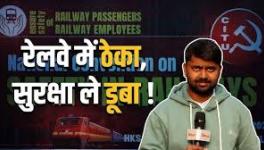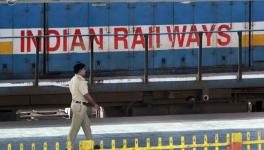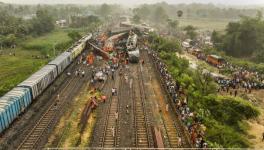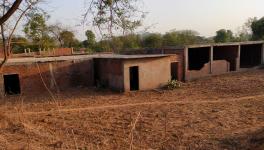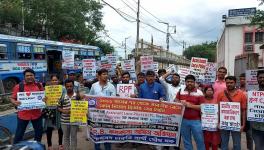Are High-Speed Trains Safe in India?
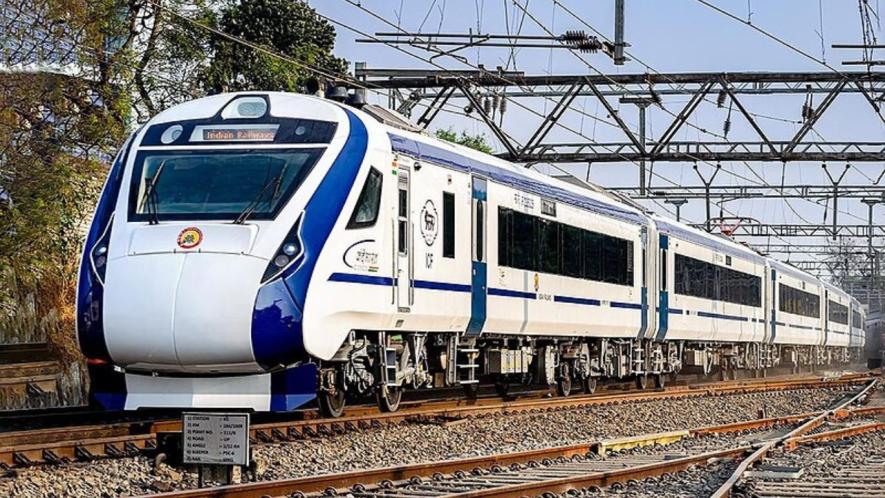
Image Courtesy: Wikimedia Commons
The government seems to be in a rush to introduce high-speed Vande Bharat trains connecting major cities and towns across the country. As of September 16, 2024, a total of 66 Vande Bharat trains are in service, including 18 sixteen-car sets, three 20-car ones and 45 eight-car services. These trains have a maximum operational speed of 160 kilometres per hour (99 miles per hour). However, these trains can attain higher speeds as, on trials, they have shown the capability of running above 180 km/h, or about 110 mph.
The Vande Bharat project has undergone significant modifications, shifting from the original plan of producing 120 train sets, each consisting of 16 coaches, to a new blueprint of 80 train sets equipped with 24 coaches, including pantry and luggage compartments. Each train set is projected to cost approximately Rs 120 crore, recent reports have said. Though substantial domestic production is being planned, the project would still have very high foreign/imported components.
The process for domestic manufacturing of these high-speed rolling stock has already been set in motion. Tender process has been initiated for “design, manufacture, supply and commissioning of standard gauge high-speed train-sets” by the National High Speed Rail Corporation (NHSRC) under the Railway Ministry. While state-run mega companies like the Integral Coach Factory (ICF) in Chennai and Bharat Earth Movers Ltd (BEML) are in the race. They are expected to tie up with foreign and private firms. Global rail equipment producers like ABB, Alstom and Siemens are likely to be the component suppliers.
As this process continues at a fast pace, the most important issue of safety cannot be ignored. It is known that India has one of the oldest and largest railway networks in the world. The single network, comprising 67,956 route km of tracks, traverses the entire country. Official data shows that more than 21,648 trains ply on the Indian Railways tracks on a daily basis. It carries a record number of about 22.15 million passengers and hauls nearly 3.32 million tonnes of freight every day.
However, the number of accidents in this massive network raises questions on safe and sound work procedures and practices. Of the various categories of accidents, the most serious ones are due to collisions, derailments, fire on running trains and accidents at level crossings.
Several probe reports have shown that these mishaps occur on account of reasons, such as human acts of omission or commission, evasion of rules and unsafe practices. But proper maintenance of railway tracks is a major pre-requisite for accident-free operations.
While emphasising on mechanised maintenance as far as possible and minimising human intervention, a parliamentary panel that audits government expenditure in almost all fields, has made a series of recommendations in this regard. In its 132nd Report on ‘Derailment in Indian Railways’, the Public Accounts Committee (PAC) has asked the government to take its recommendations “with utmost seriousness” and directed it to inform it about the actions taken in this regard within six months. Official sources said this report is likely to be tabled in Parliament in the upcoming session.
In its 78-page detailed report, the panel identified several lapses, such as instances of delays in procurement of equipment, vacancies in the number of skilled staff needed for a variety of maintenance jobs, lack of recruitment to fill up these vacancies, deficiencies in deployment of high-tech equipment like Track Recording Cars (TRCs) and installing the KAVACH anti-collision devices on trains, among other things.
The TRCs are specialised vehicles that inspect the geometrical and structural conditions of rail tracks, identifying defects that could lead to derailment and other accidents. The audit observations showed that there were shortfalls in the TRC inspections “ranging between 30 per cent and 100 per cent … which has had an adverse impact on the quality of railways assets and also implications on safe operation of trains on various routes”.
Taking note of the accident probe report on the February 2019 Seemanchal Express derailment in the East Central Railway (ERC) zone, it pointed out that TRC inspection was overdue by four months. “Had the TRC run been carried out, it could have given vital inputs on possible defects in track,” it noted, adding that this had occurred due to “faulty planning” by the agencies of the Ministry.
The audit observations also referred to the idling of track machines in all the 12 zonal railways, saying that in 11 of them, these critical machines were “kept idle for 13 to 1881 days due to non-availability of track machine staff”. It said there have been instances in the past “when derailments have taken place because of rail breakage.”
Stressing that proper maintenance of rail tracks was a prerequisite for safe operation of trains, the parliamentary panel suggested that mechanised maintenance should be prioritised as far as possible while pointing out that there was “much room left” to achieve this goal.
The KAVACH collision-avoidance system, the panel said, was India’s own state-of-the-art electronic system Automatic Train Protection System made by the Lucknow-based Research Designs and Standards Organisation (RDSO). KAVACH activates the train braking system automatically if the loco pilot fails to control the train as per the speed restrictions.
The panel said that in order to make the KAVACH system an effective safety tool, it has to be deployed in all trains. Pointing out that this has not been done even after much time lapse, it recommended that a time-bound programme for installation of KAVACH in all divisions and routes should be taken up urgently by the government.
As per latest reports, the automatic train protection system has been installed merely on 1,465 km of the country’s 68,000-km rail network by early August. It accounts for just 3% of the national rail network, along with just 144 locomotives. Work is going on to cover another 3,000 km. Earlier this year, permission was granted to extend coverage to 7,228 km. (HINDU 7/9, Bloomberg 3/9 and Railway Gazette International 26/8).
Regarding filling up of vacancies in critical positions, the audit noted that their percentage ranged from 9% to 36% in Railway’s most-important Civil Engineering Department. It also said that in the East Central Railways (ECR), where the Seemanchal Express derailment had occurred, “no outsourcing was done” or recruitment carried out to address the problem of shortage of workforce. From the submissions of the Rail Ministry, the panel noted that accident inquiry reports of the zone revealed that in 23% of the total derailments (40 out of 172) in ECR, one of the major factors responsible for the derailment was improper track maintenance.
“Despite the fact that the three Zonal Railways viz. North Central Railways, North Frontier Railway and West Central Railway had more than seven per cent vacancies, no serious efforts seem to have been made for filling up vacant posts, nor was outsourcing done in any of these Zonal Railways,” the report noted.
While total vacancies among the non-gazetted group of staff in the Civil Engineering Department stood at 68,619 in July 2023, only 11,784 candidates were empanelled for these positions between 2018 and 2023, it added.
Significantly, the audit report also pointed out that over 60% of the train coaches did not have fire extinguishers installed in them. Of the “identified 44,407 coaches on 12 Zonal Railways, fire extinguishers have not been provided in 27,763 (62 per cent) coaches.” It said the reasons attributed by the Ministry for lack of fire extinguishers included delays in tendering processes, failure of the company or companies to supply them or delaying supply.
The Committee lamented that there was “still much left to be desired” regarding installation of fire extinguishers. It stressed the need for conducting exercises at regular intervals to assess the preparedness against fire hazards. It strongly observed that “the system is still not capable of putting a full-stop to such mishaps, and loss of lives and property due to accidents continue to happen.”
The writer has extensively covered internal security, defence and civil aviation for the Press Trust of India for over three decades. Views are personal.
Get the latest reports & analysis with people's perspective on Protests, movements & deep analytical videos, discussions of the current affairs in your Telegram app. Subscribe to NewsClick's Telegram channel & get Real-Time updates on stories, as they get published on our website.









